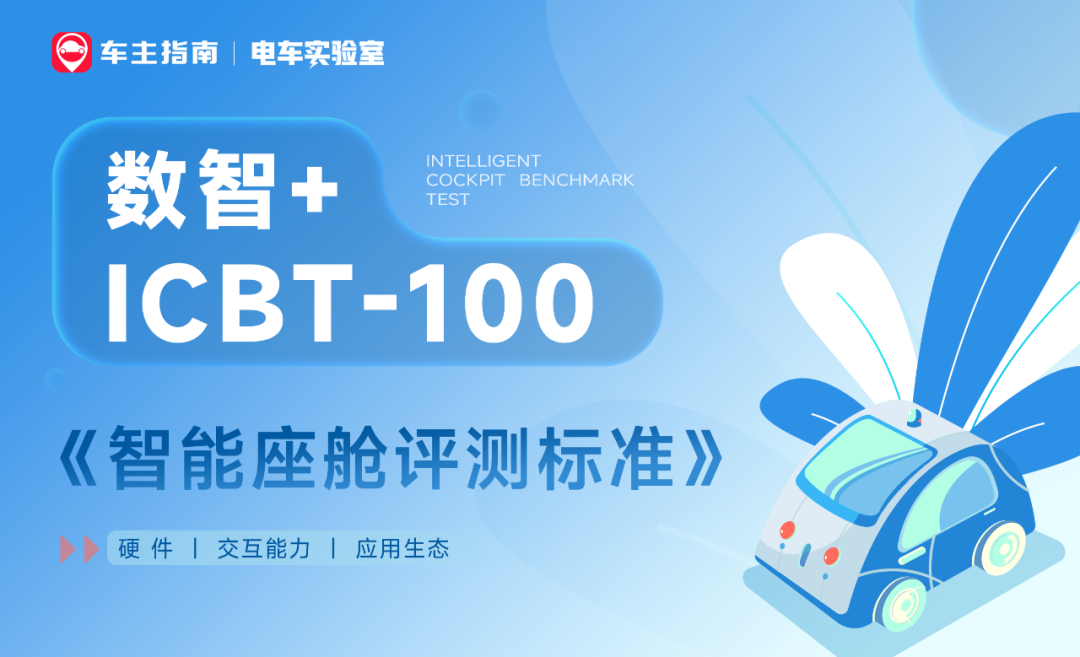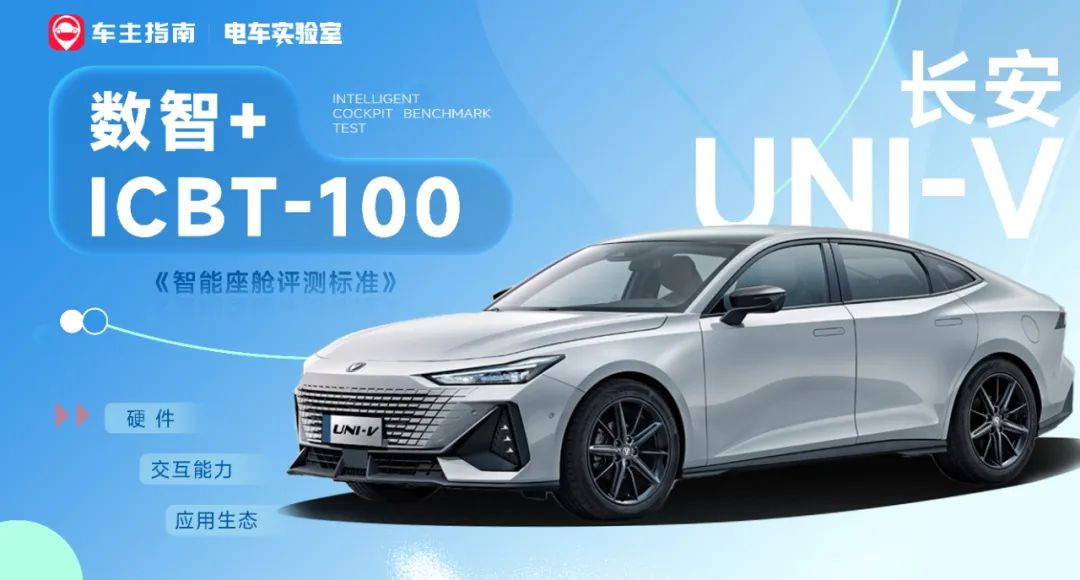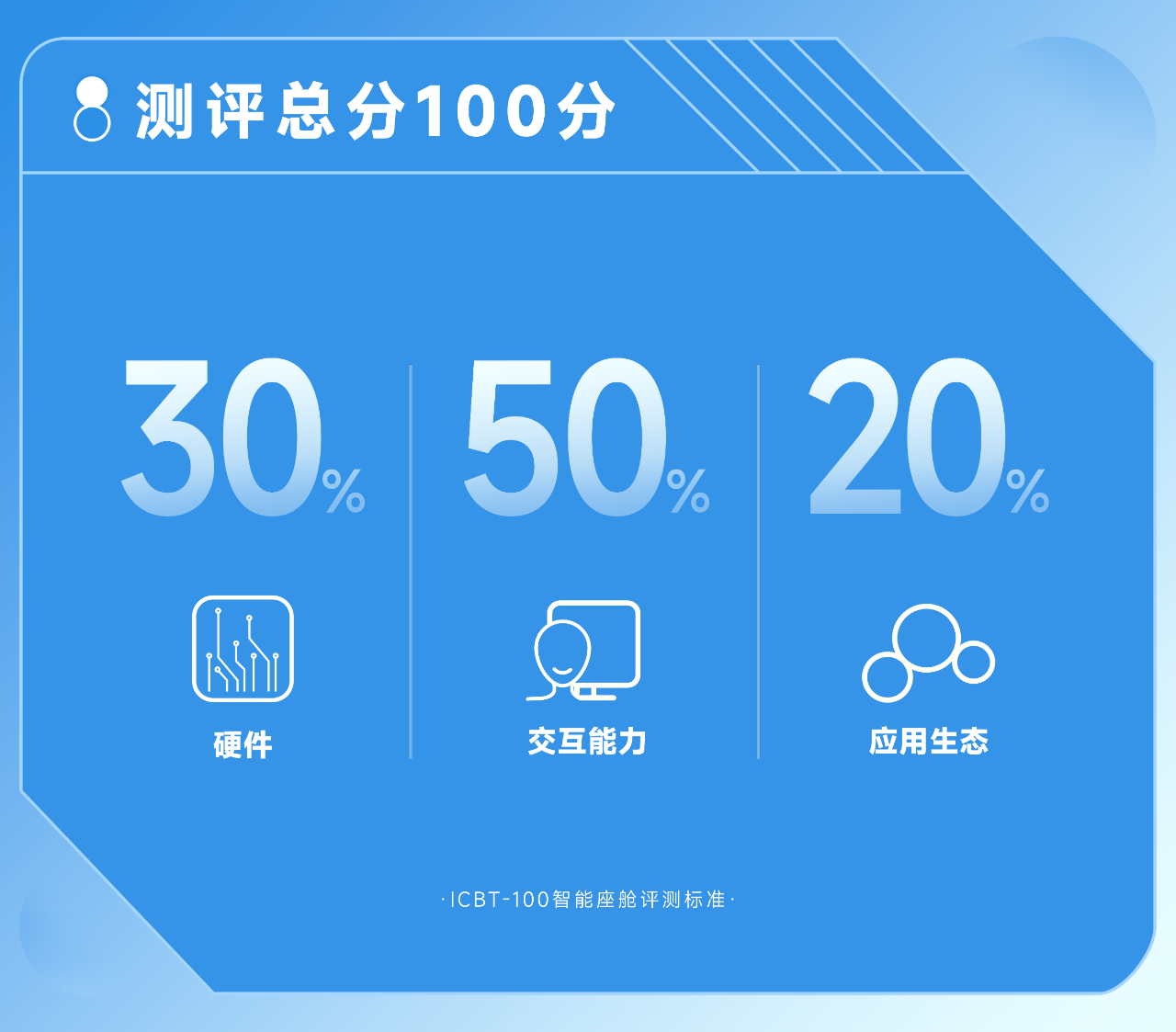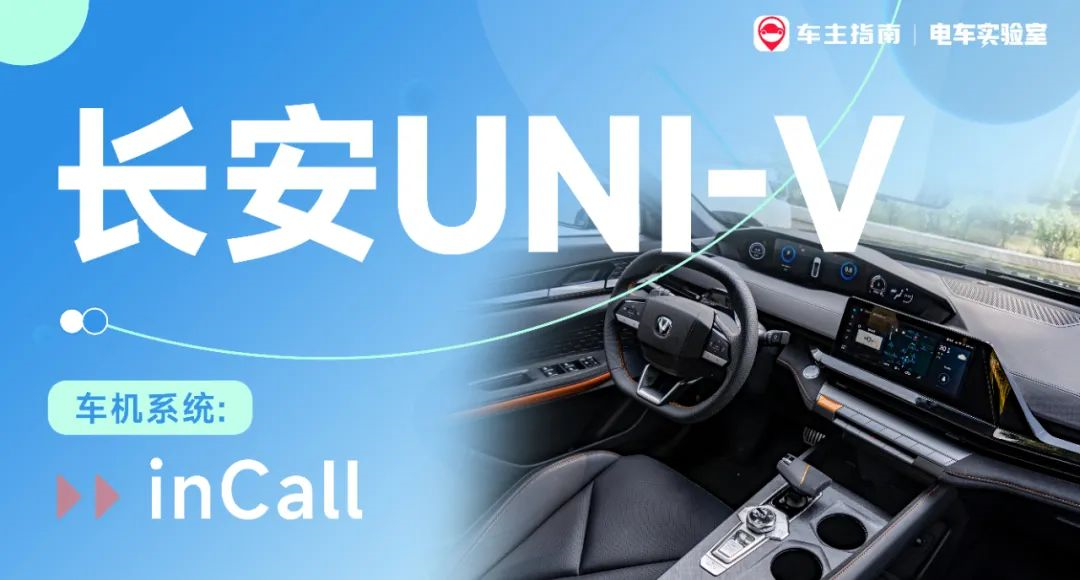Practical Price, Superior Experience.
Written by RuiFeng Xiong,
Do you still remember when I entered college, the luxurious three-piece was only a mobile phone, a computer, and a game console. But recently, through communication with the post-00s generation, I discovered that the equipment for entering college is not as simple as it used to be. In addition to the original three pieces, you also need a “car”.
So the question is, what kind of car can attract the passionate post-00s generation? The answer is simple: a small steel cannon that not only has a good appearance but also performance that meets driving and car entertainment, and the model that comes to our Intelligent Cabin Test Center in this issue is the current hot model – Changan UNI-V.
As usual, this time, we will continue to use the rules of the “Smart + ICBT-100 Intelligent Cabin Evaluation Standard” version 1.0, focusing on three major categories: intelligent hardware, interactive capabilities, and application ecosystem. At the same time, we will divide each major category into data and experience dimensions, and further divide them into more than 30 projects for evaluation. Let’s take a look at how well the intelligent car systems we use in our daily life perform.
Car Hardware Section
In the intelligent hardware project, we focus on the screen, basic hardware, and expansion interface to refine the scores, which is also the most intuitive to our daily use.
In terms of the cabin layout of the UNI-V, it is definitely full of sporting sense, with a clear layering central control styling and a mix of various hybrid materials that are eye-catching. The vertically stacked display, consisting of 3 LCD screens that form the full angle instrument panel and 10.3-inch central control screen, clearly displays driving information and multimedia information, which is definitely worth the money in terms of overall impression.
At the first glance, the 10.3-inch center console screen of UNI-V adopts the TM103XDHP95 TFT-LCD screen exclusively customized by Tianma, with a resolution of 1920*720 and a response time of 40ms. The measured PPI is up to 199 (RGB standard arrangement), NTCS color gamut is 89.5%, and the peak brightness reaches 883.99nit, while the lowest brightness is 0.71 nit, which performs at an excellent level.
It should be noted that the high brightness brings high temperature. In the test, the peak temperature of the screen in the car without air conditioning exceeded 49 degrees Celsius, which resulted in some hot feeling during the use. It seems that Changan’s tuning of the screen is too radical.
In addition, in terms of actual viewing experience, the viewing angle of the UNI-V center console screen is only at a medium level, with a measured angle of 78/78/79/78° (up/down/left/right viewing angles), and the screen calibration tends towards a warm style. However, the effect of the screen surface’s oil-repellent layer is average, and it has a significant gap in fingerprint control ability compared with the previous tested BMW X3 and Mercedes-Benz GLC.
Regarding the basic hardware of the cabin, although UNI-V officially only claims to be equipped with the SuperFast intelligent chip, we can confirm that it is equipped with a dual SOC matrix composed of MediaTek MT8666 and Horizon Journey 2 after our disassembly and analysis. Among them, MediaTek MT8666 is mainly responsible for the basic operation and calculation of the intelligent cabin system. It was released in 2018, made in 12-nanometer structure, and adopts an 8-core structure (A73+A53), with CPU computing power of 56.8K (2TOPS), integrated with Mali-G53*3 GPU, and the comprehensive computing power is 113GFLOPS (lower than Qualcomm 820A).The Horizon Journey 2 chip is mainly used to realize multiple active AI interaction functions such as multi-mode lip reading, eye tracking screen, gesture interaction, emotion recognition, gender and age detection, smoking and calling detection, fatigue monitoring and intervention, and was released in 2019. It is made with 28 nm technology and uses the independently developed high-performance computing architecture BPU2.0. It can provide an equivalent computing power of over 4 TOPS, and each TOPS AI ability output can reach more than 10 times the equivalent computing power of a GPU, with a typical power consumption of 2W. In addition, the chip is matched with 6G (RAM) + 64G (storage space) memory combination.
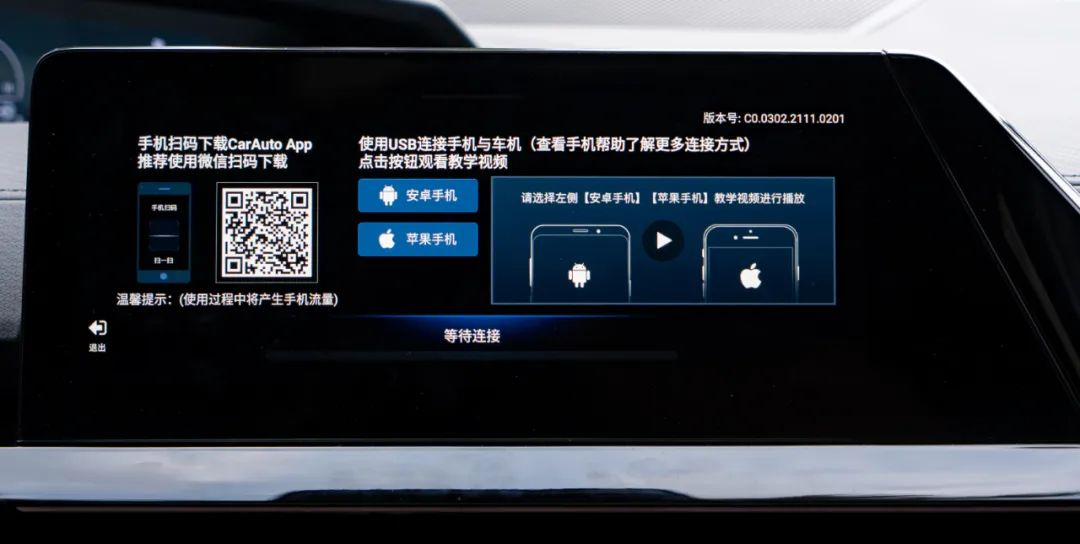
In terms of the internet module, although UNI-V does not support mainstream Carplay/Carlife, it is equipped with the CarAuto connectivity system, which supports Apple and Android phones. Specifically, users can connect their phones with a data cable, and thereby achieve functions such as screen mirroring, navigation, video playback, and using their phones as game controllers on the car screen.
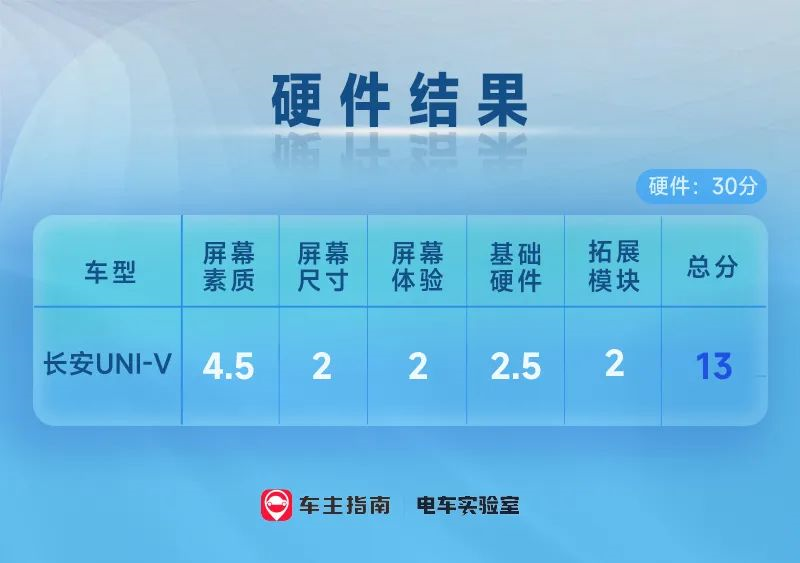
Although the chip performance has a slight gap with the mainstream models, there will be a pleasant surprise in the following system interaction!
Interactive Capability
In the IT industry, there is a saying: “No matter how good the hardware is, without system optimization, it is useless.” This reflects the importance of the system. At the same time, the interactive interface is not only the most direct contact between the owner and the car screen, but also excellent logic can directly improve the user experience of the entire cockpit. Therefore, in this intelligent cockpit test, car screen interaction occupies a large part, and in this section, we divided it into three dimensions: system, voice, and other.
Special Note: In order to more directly display the system logic, we set up a logic challenge competition, which is to let first-time users open each function according to the process in the prescribed time: matching the phone Bluetooth→opening Bluetooth music (starts playing)→dialing 10086 (connected)→adjusting the screen brightness of the car screen (adjust to the brightest)→setting the destination for navigation, to see who can do it in the shortest time.
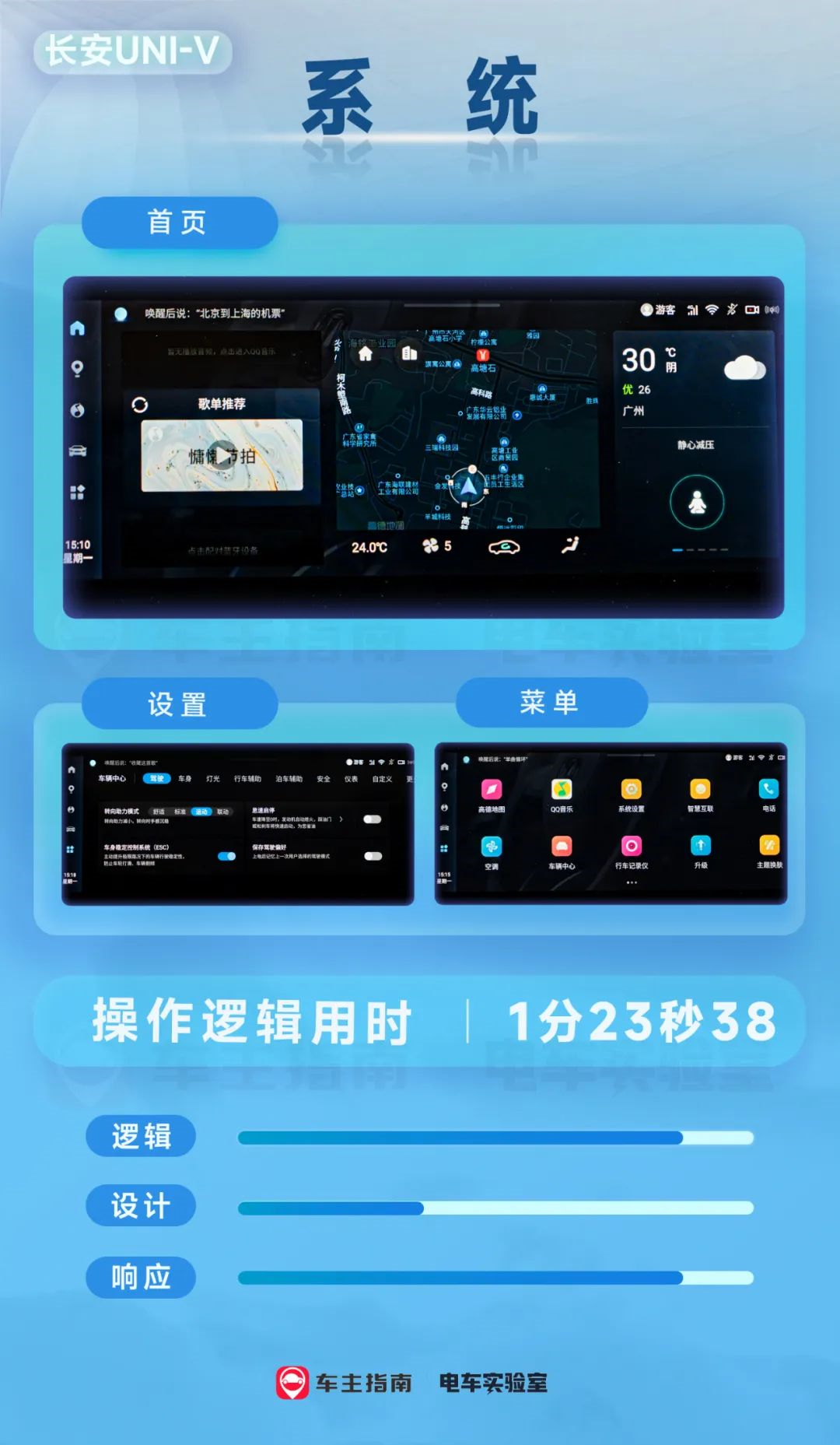
Based on Android 9.0, UNI-V’s car screen has developed a In Call car system, and the whole interface logic tends to be more functional. The homepage adopts a card-style design, with the center fixed as a map and air-conditioning information card, the right side fixed as a weather and mode card, and the left side using the floating card layout to support playlist recommendation, Bluetooth music, Bluetooth calls, and up-and-down switching.## Translation
Besides the conventional touch screen operation, UNI-V supports gesture control and provides 5 gesture recognitions by default for “previous song”, “next song”, “navigation home”, “navigation company”, and “taking photos”. However, in practice, its sensitivity is not as good as the BMW X3 in the previous test.
As for the voice system, UNI-V adopts the latest mainstream iFLYTEK voice interaction system and has two independent microphones in the front row to ensure recognizing the driver and co-driver and anti-noise capability.
The system can perfectly achieve basic voice navigation, temperature, windows, music, volume, weather, etc., as well as support custom wake-up words, continuous conversation, natural conversation, context recognition, cross-scenario recognition, custom instructions, and perform well in the test of recognition rate and error correction.
The official also claims that this voice system will continue to be updated to add more auxiliary functions. It is not an exaggeration to say that this voice system is no less competitive than the new high-level opponents.
In addition, UNI-V provides a face recognition system that recognizes user identities through the camera in front of the steering wheel, automatically calls exclusive vehicle settings, and can log in to QQ Music, Himalayas and other ecosystem accounts.
Moreover, there are five fixed options on the left of the screen: Home, navigation system, multimedia, vehicle information, and application. In addition to being the status bar on top, the quick settings menu can be pulled down, and the overall experience is quite similar to the operation logic of smartphones, tablets, and other smart devices.
Although the logic is quick and convenient, the beauty of the system UI is indeed a bit off. It seems like looking at the early Android interface, with jumbled icons and no visual uniformity.
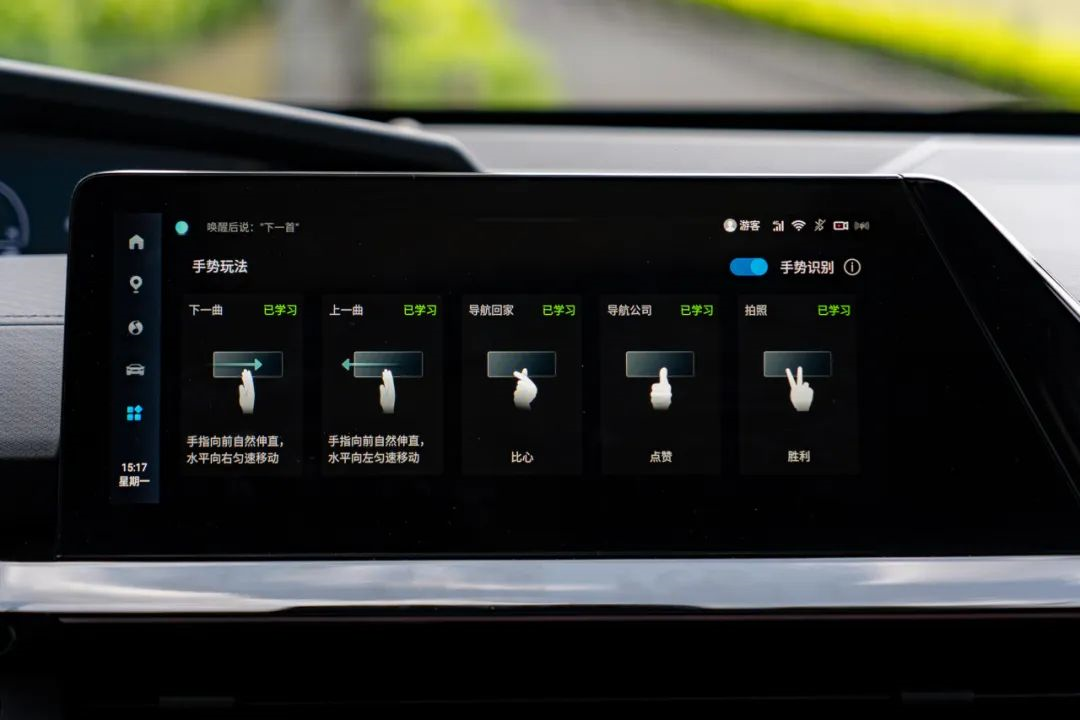
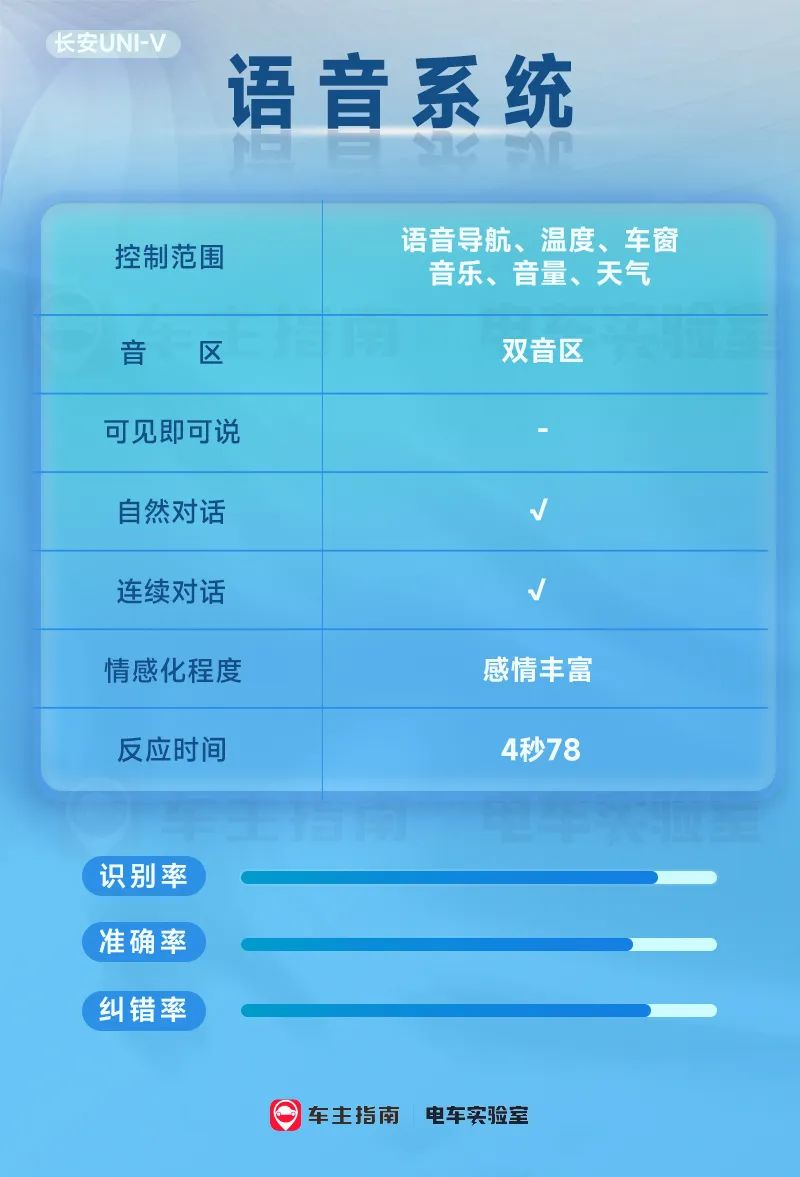
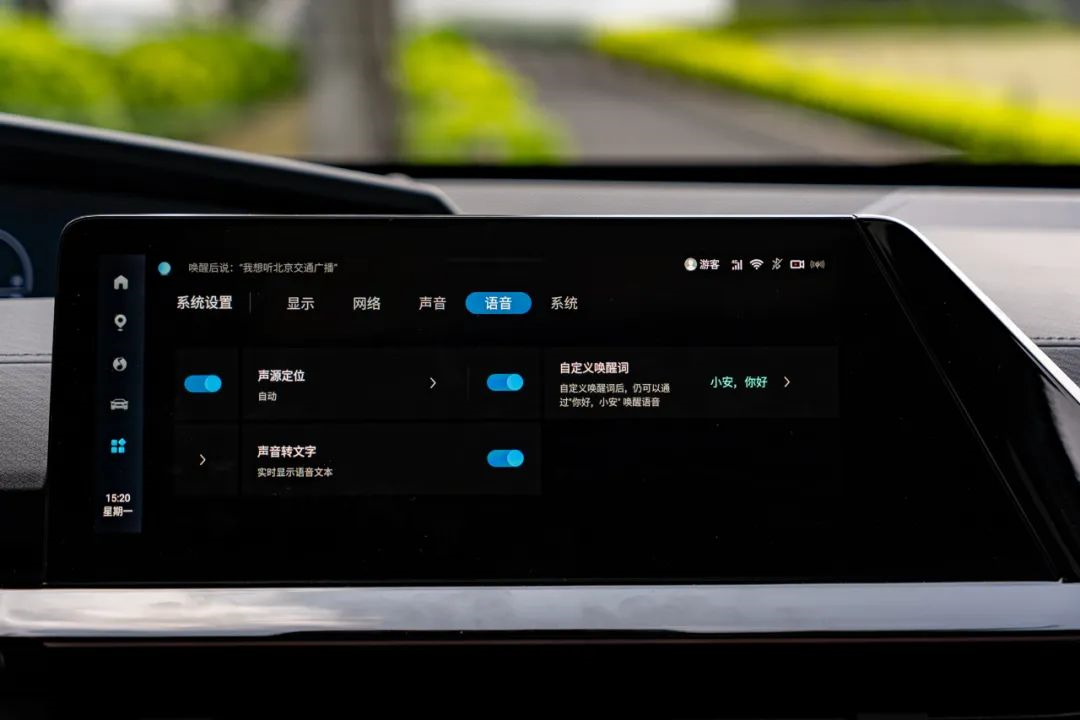
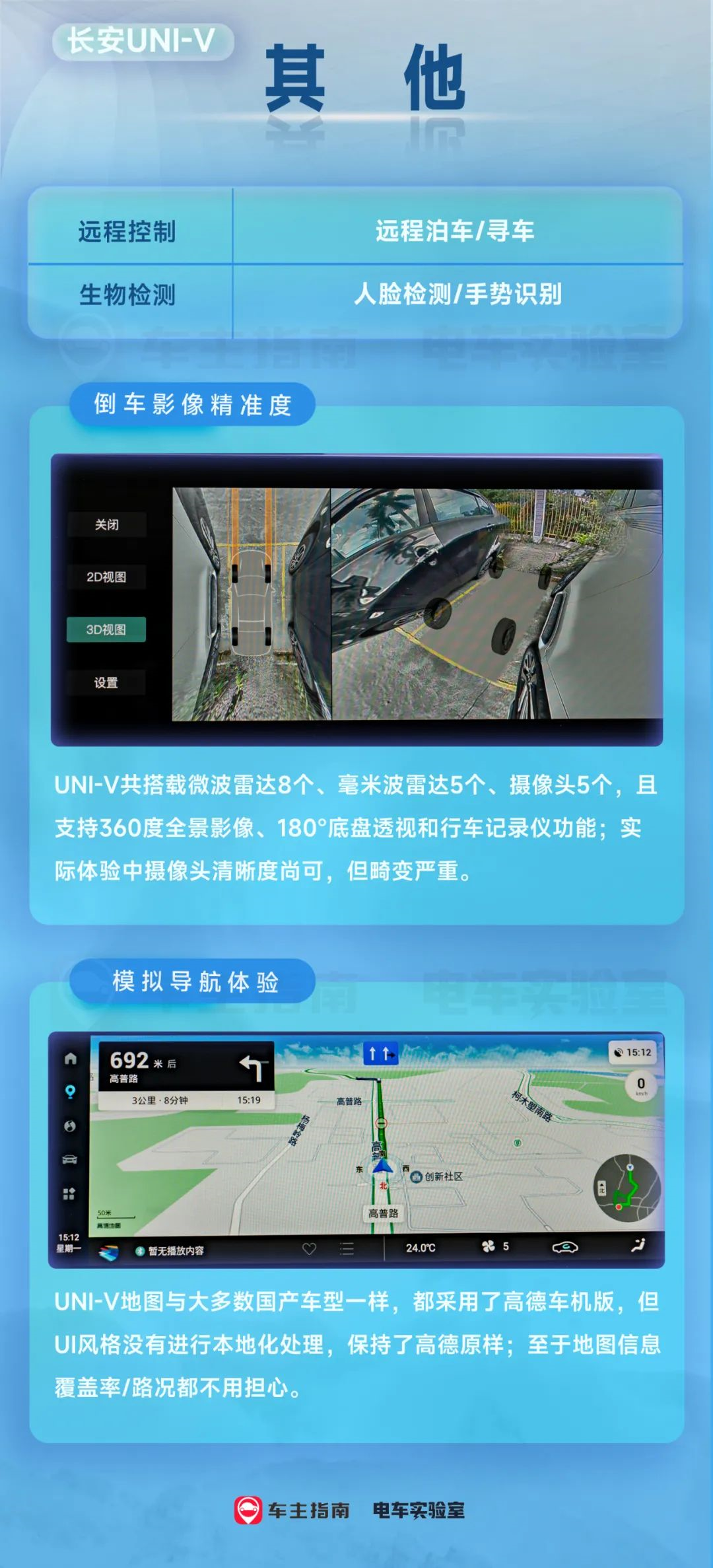
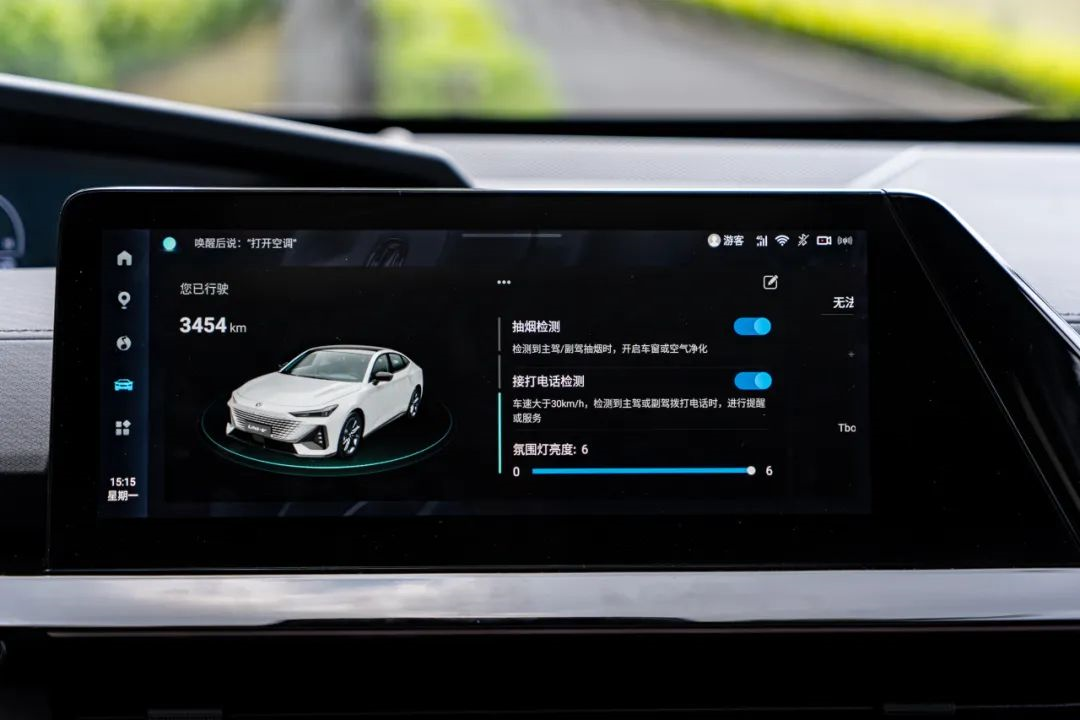 The overhead camera above the front seats of the car has scene-based active interaction ability, such as automatically turning on the screen when the central control screen is off for one second after the driver looks at the screen; moderately opening the window and activating the air purification system based on the speed of the car when the passenger is smoking; automatically lowering the multimedia volume when a passenger answers a phone call and restoring the volume after hanging up; monitoring the frequency of driver’s eye-blinking and yawning to assess fatigue driving level and providing fatigue intervention warning and fun suggestions through voice; by saying “I want to take a photo” or “321, take a photo”, the lip-reading-assisted recognition algorithm will effectively reduce noise interference and activate the photo-taking function.
The overhead camera above the front seats of the car has scene-based active interaction ability, such as automatically turning on the screen when the central control screen is off for one second after the driver looks at the screen; moderately opening the window and activating the air purification system based on the speed of the car when the passenger is smoking; automatically lowering the multimedia volume when a passenger answers a phone call and restoring the volume after hanging up; monitoring the frequency of driver’s eye-blinking and yawning to assess fatigue driving level and providing fatigue intervention warning and fun suggestions through voice; by saying “I want to take a photo” or “321, take a photo”, the lip-reading-assisted recognition algorithm will effectively reduce noise interference and activate the photo-taking function.
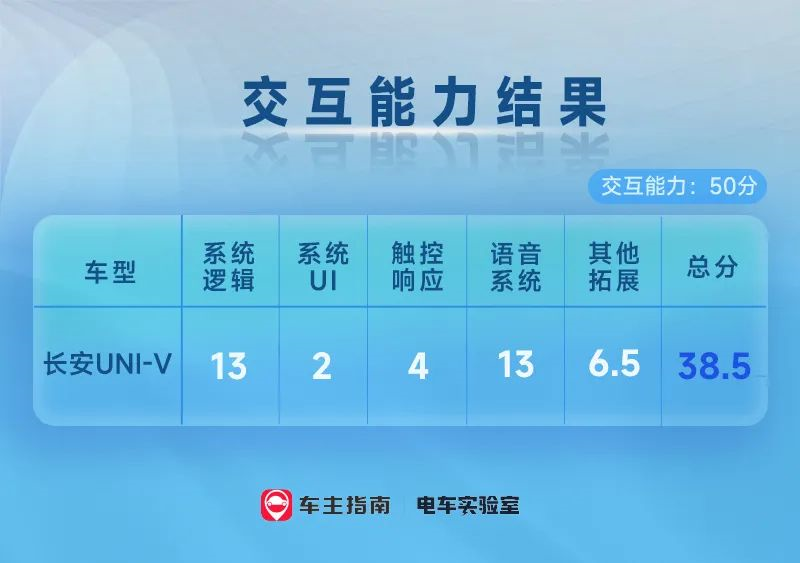
Application Ecology
However, in essence, to achieve a truly intelligent cockpit, relying solely on the vehicle multimedia system itself is not enough, and a richer application ecology must be integrated. Without adequate application ecology, the system itself does not have much value, which is similar to the current booming IT industry.
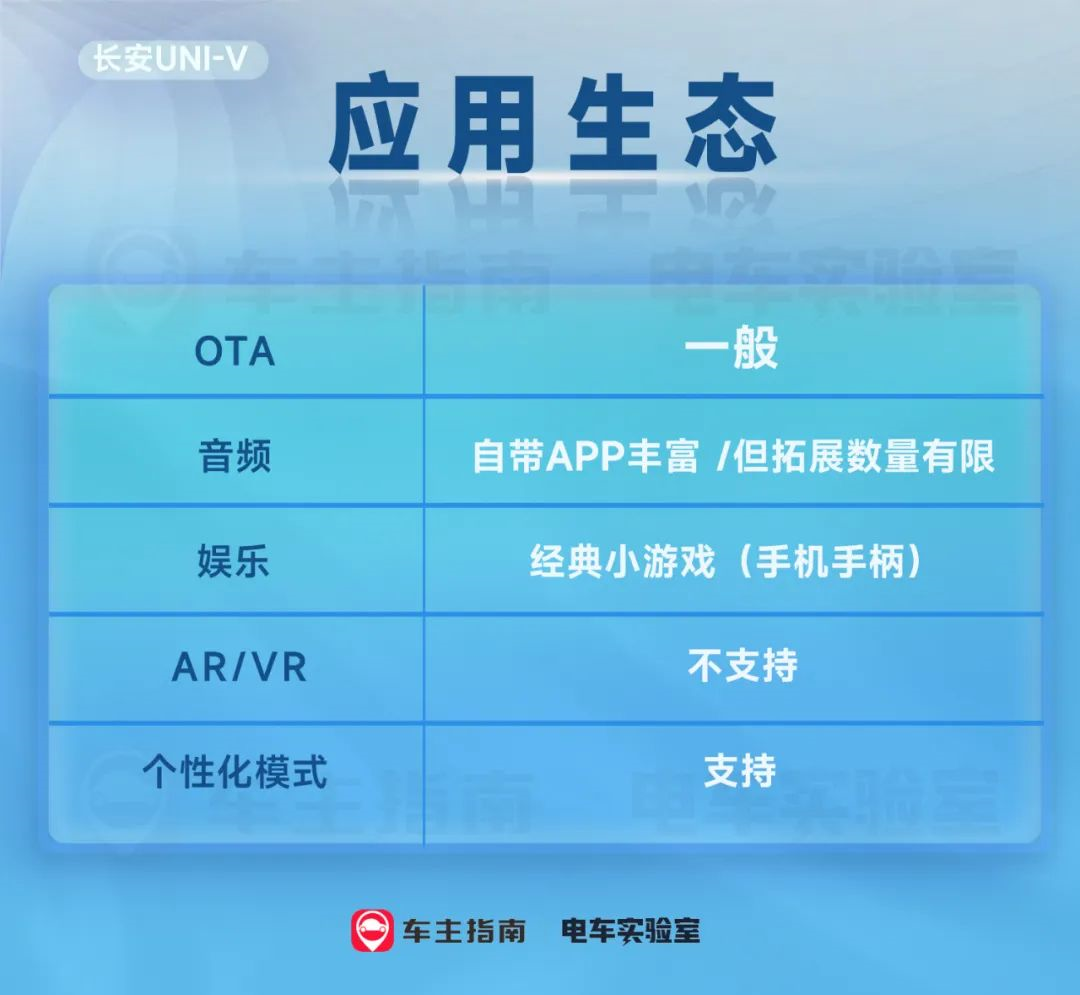
UNI-V performs moderately in this aspect. Although it is equipped with QQ Music, iQiyi, Ximalaya, Kuwo, Changba, and Douyin, etc. that can meet most of the daily needs, support small car programs, and can turn smartphones into gamepads to play classic games on CarAuto, but the number of apps provided in the app store is relatively small and does not support third-party APK installation.
Fortunately, UNI-V can turn on various driving modes directly. For example, in the “Refreshing Mode,” the air conditioner is kept at 18℃, wind strength ranges from 0 to 5 and keeps switching between blowing on the face and feet, while playing energetic music to keep drivers alert.
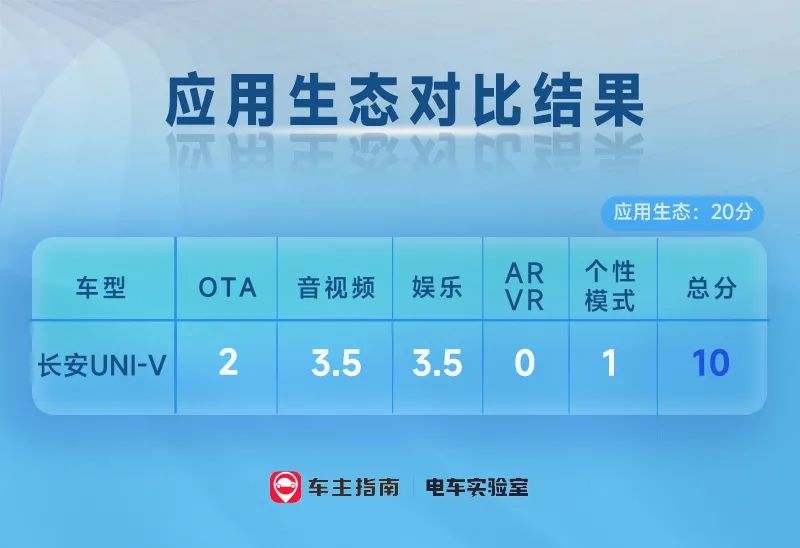
Conclusion
As is well known, with the improvement of the intelligence level of cars, the significant change in the intelligent cockpit is moving from passive interaction (initiated by humans) to active interaction (initiated by humans or machines), and adding more ways to obtain content and services. Therefore, the vehicle multimedia system needs to provide a more active and natural emotional experience, satisfying the needs of passengers for cockpit information entertainment and work activities.The definitions brought by the enriched cabin data are becoming more complicated, and our “Smart + ICBT-100 Intelligent Cabin Evaluation Standards” is to explore meaningful and practical intelligent experience for consumers. Therefore, we have carefully subdivided the intelligent cabin to clearly understand the strengths and weaknesses of each vehicle’s intelligent cabin.
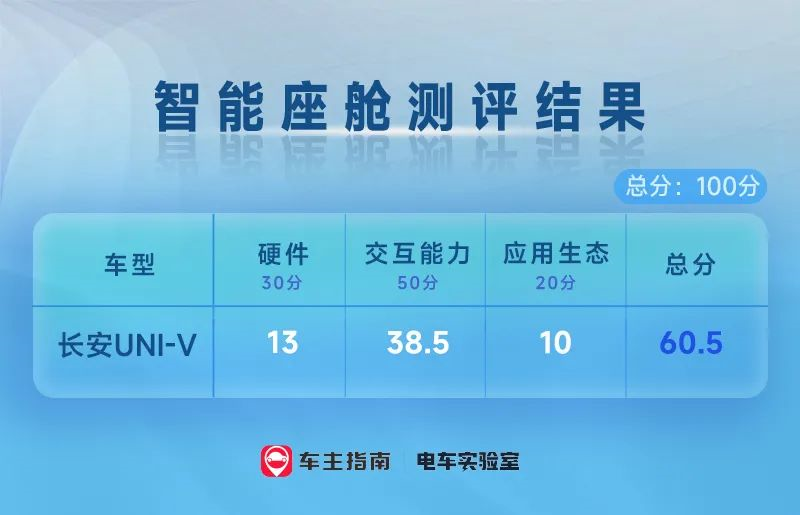
In this test on the Changan UNI-V, we can see the progress of independent brands in the intelligent cabin through numerous interactive and experiential innovations. Especially, even though the hardware environment is similar, Changan has achieved excellence in software logic/response and intelligent voice, which gives us a more comfortable experience. This is something that certain host factories should learn from.
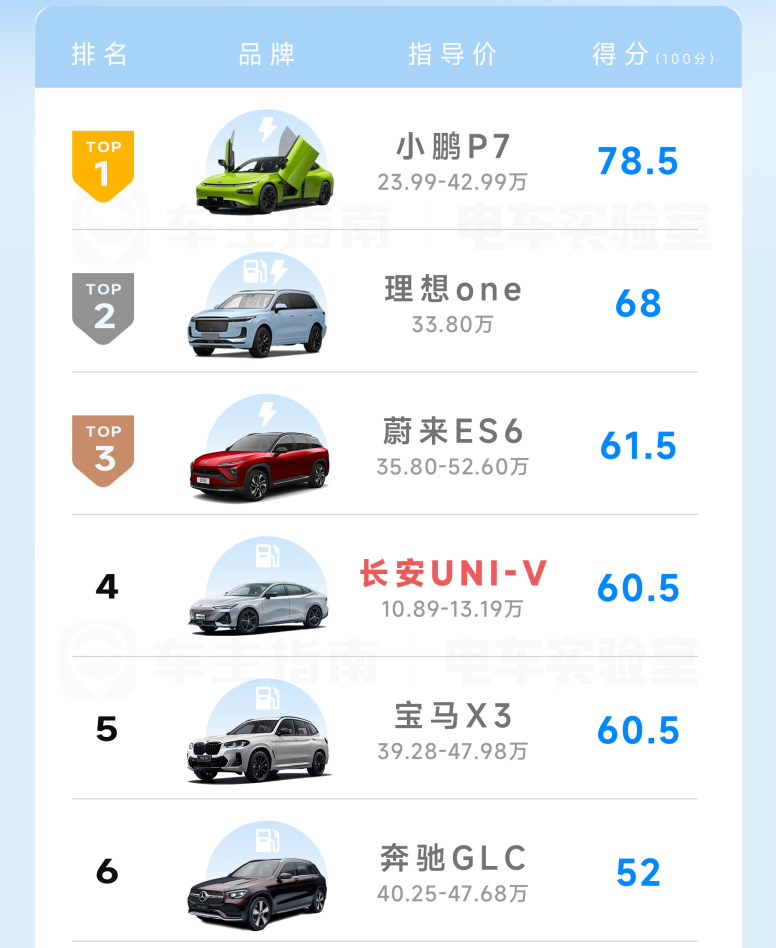
At the same time, although the final total score of 60.5 is lower than the top-ranked competitors like NIO ES6 and XPeng P7, you should know that this is a “people’s car” model priced just over RMB 100,000, and its total score is higher than the traditional luxury models of BBA, representing a domestically produced “performance” small steel cannon. This inevitably makes me look forward to the performance of more domestically produced models in the future, and I believe that our Chinese-made vehicles will definitely refresh our understanding of intelligent performance.
Previous content: (Click below to view)
NIO ES6 / XPeng P7 / Li ONE: “We Xiaoli, Who Is the Strongest Intelligent Cabin? ICBT-100 Test”
Standard released: “Electric Car Lab Intelligent Cabin Evaluation Standard Released | Smart+ ICBT-100“
This article is a translation by ChatGPT of a Chinese report from 42HOW. If you have any questions about it, please email bd@42how.com.
